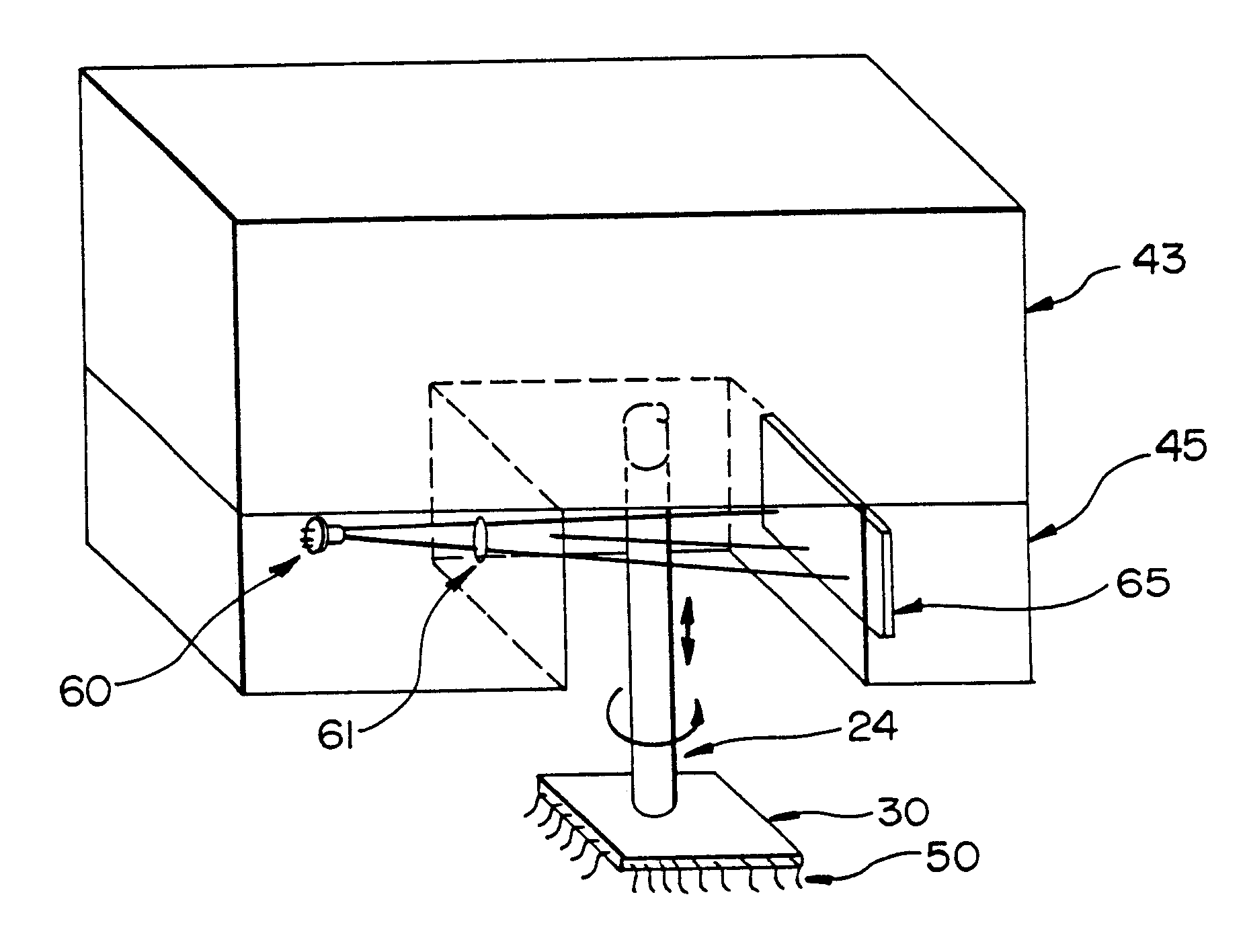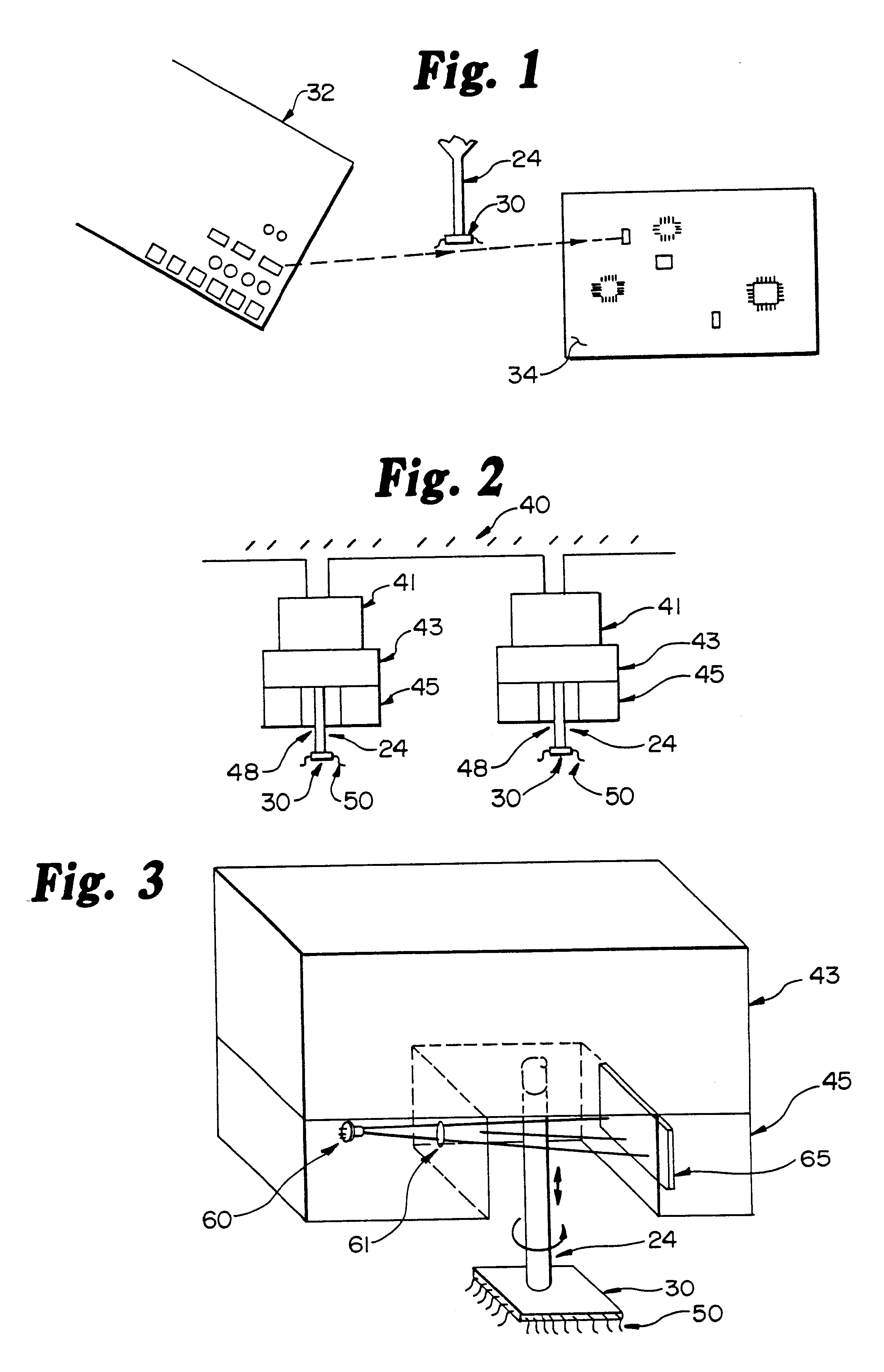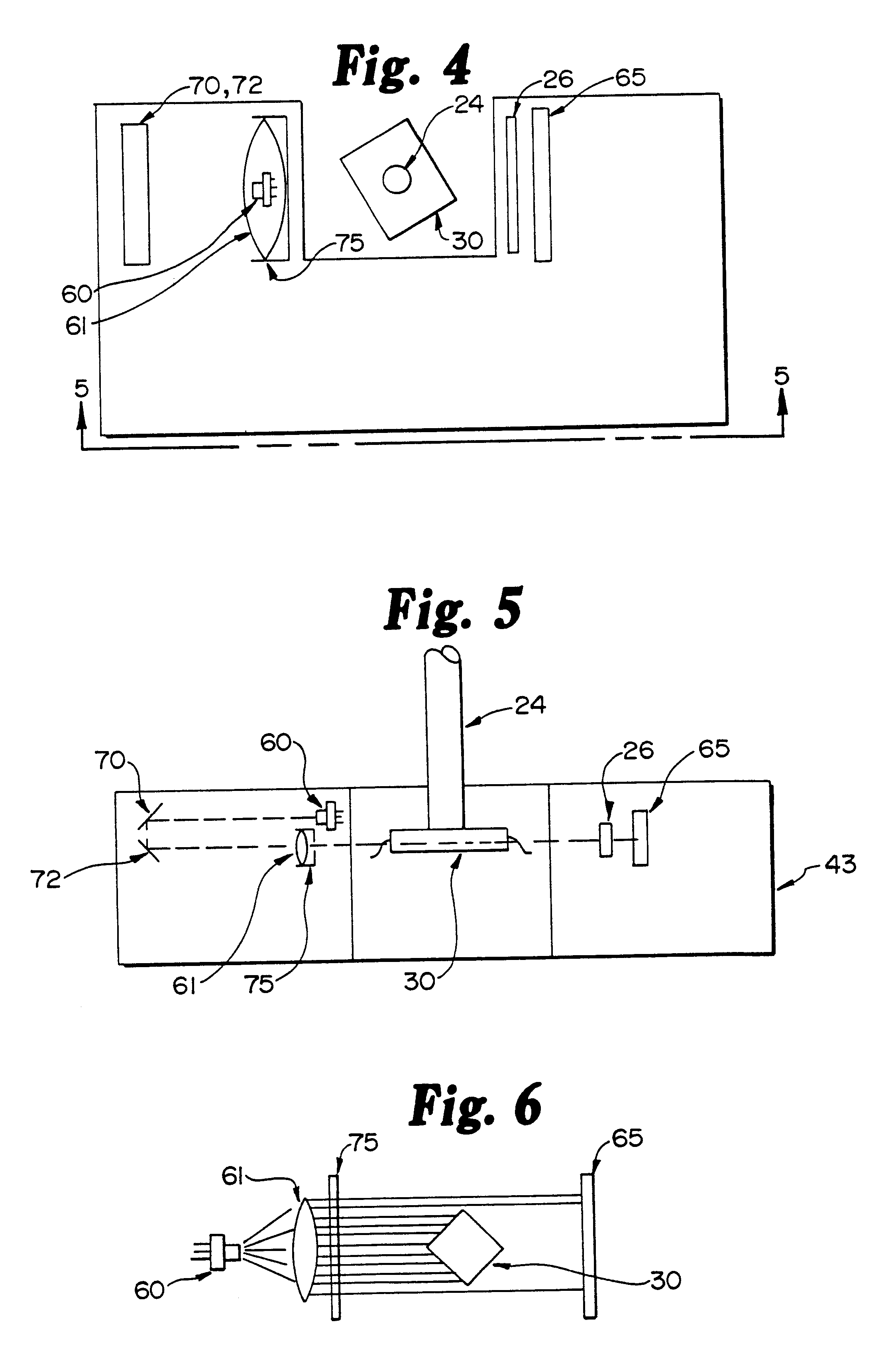High precision component alignment sensor system
a sensor system and high-precision technology, applied in the direction of converting sensor output optically, instruments, measuring devices, etc., can solve the problems of high cost, difficult to achieve the very high degree of accuracy, and damage such as microcracking and other such components, so as to accurately determine the angular orientation and lateral position of components. , to achieve the effect of accurately determining the angular orientation of a componen
- Summary
- Abstract
- Description
- Claims
- Application Information
AI Technical Summary
Benefits of technology
Problems solved by technology
Method used
Image
Examples
Embodiment Construction
FIGS. 1 and 2 illustrate the general environment in which the invention is to be used. FIG. 1 illustrates in diagram form a typical surface mount component placement machine in which one or more vacuum quills 24 are used to sequentially pick up components 30 from predetermined bins 32, transport them as quickly as possible to a circuit board 34 or other surface upon which the component must be precisely aligned, and place the component 30 accurately at the desired location with the proper alignment of the leads 50 of the component 30 to a wiring layout which has been previously created on the circuit board 34. For high precision placement, an accuracy in angular alignment or orientation of 0.30 degress with positioning error in the X,Y plane of 0.001 inch is required. Component 30 part sizes typically employed in such a system vary between approximately 20 thousands of an inch in size in two inches in size, although in certain cases larger component 30 sizes are required.
Angular ori...
PUM
 Login to View More
Login to View More Abstract
Description
Claims
Application Information
 Login to View More
Login to View More - R&D
- Intellectual Property
- Life Sciences
- Materials
- Tech Scout
- Unparalleled Data Quality
- Higher Quality Content
- 60% Fewer Hallucinations
Browse by: Latest US Patents, China's latest patents, Technical Efficacy Thesaurus, Application Domain, Technology Topic, Popular Technical Reports.
© 2025 PatSnap. All rights reserved.Legal|Privacy policy|Modern Slavery Act Transparency Statement|Sitemap|About US| Contact US: help@patsnap.com



